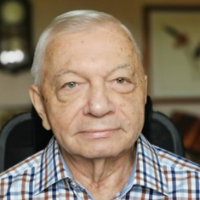WCOC 2025

Zelinsky Institute of Organic Chemistry Russian Academy of Sciences, Russia
Abstract:
The development of the chemistry of stable organic radicals has led to the creation of a wide range of functional paramagnetic materials (E.V. Tretyakov et al., Russ. Chem. Rev., 2022, 91, RCR5025; E.V. Tretyakov, in Organic Radicals, Eds. C. Wang, A. Labidi, E. Lichtfouse, Elsevier, 2024, p.61). A separate and important direction in the development of radical chemistry is the targeted design of functional systems that include a paramagnetic group and a fluorophore fragment and are widely used for real-time monitoring of biochemical processes. Previously, we have shown that multilayer optical disks for high-density recording of information can be created on the basis of 3-acyl-2-furylchromones capable of rearrangement into fluorescent products as a result of photoisomerization (V. Barachevsky, M. Krayushkin, V. Kiyko, in Photon-Working Switches, Eds. Ya. Yokoyama, K. Nakatani, Springer Japan KK, Tokyo, 2017, p.181). In the present work methods of synthesis of hybrid products reacting both to UV-irradiation and to magnetic influence were proposed. 2-furyl-3-acylchromones containing paramagnetic groups of different nature were obtained and it was shown that in the process of their UV-irradiation rearrangement with formation of spin-labeled fluorescent products takes place. It seems promising to investigate the photophysical and magnetic properties of spin-labeled chromones, as well as the specific influence of the paramagnetic group on the processes of their photoisomerization with the formation of a multispin system in the excited state.
Biography:
Prof. Vladimir N. Yarovenko is a leading researcher at the A.E. Chichibabin Laboratory of Heterocyclic Compounds at the Zelinsky Institute of Organic Chemistry of the Russian Academy of Sciences. His research focuses on the design and development of advanced functional materials and advanced drugs. His work is documented in over 240 scientific papers and 30 inventions.
